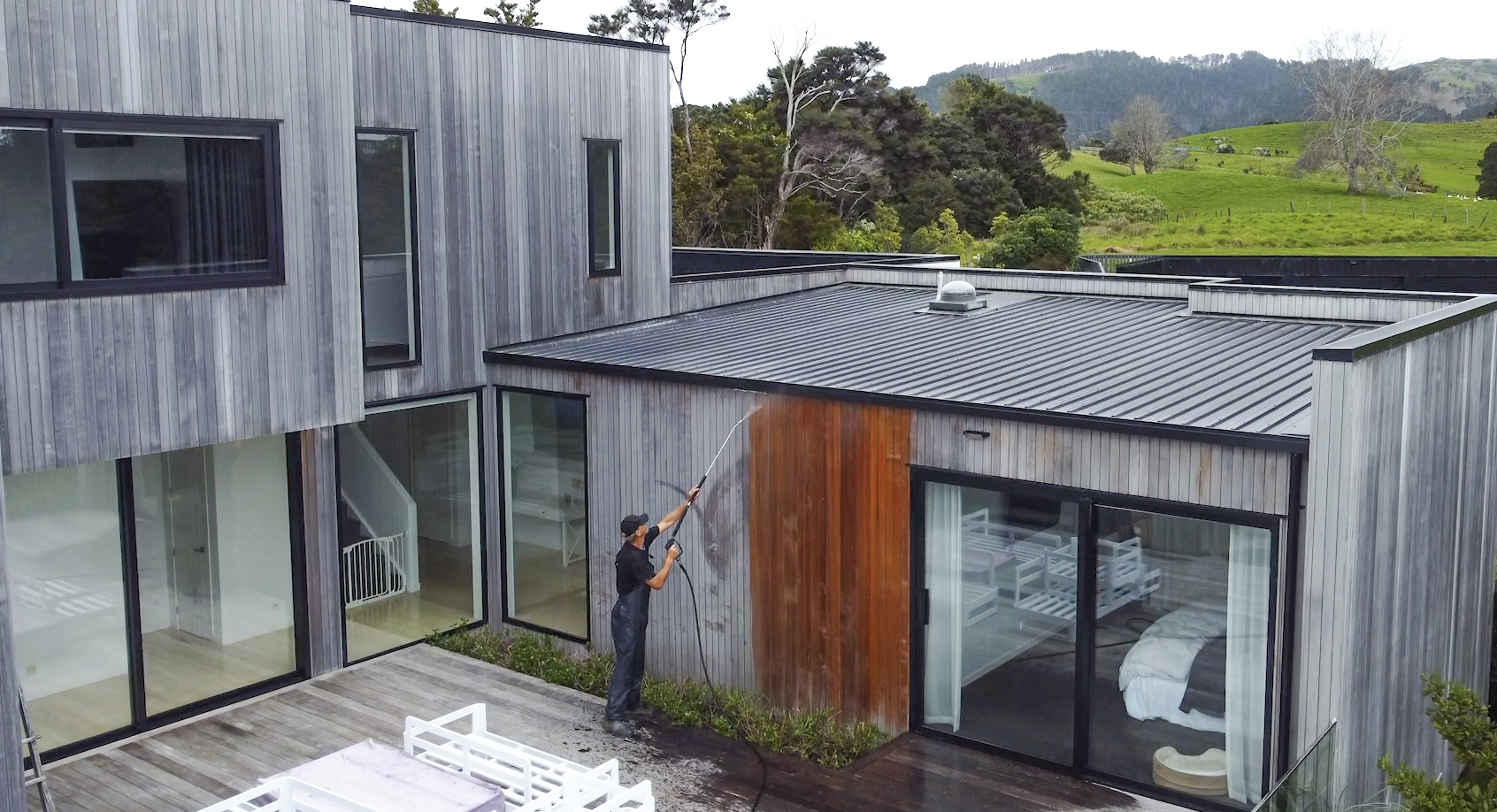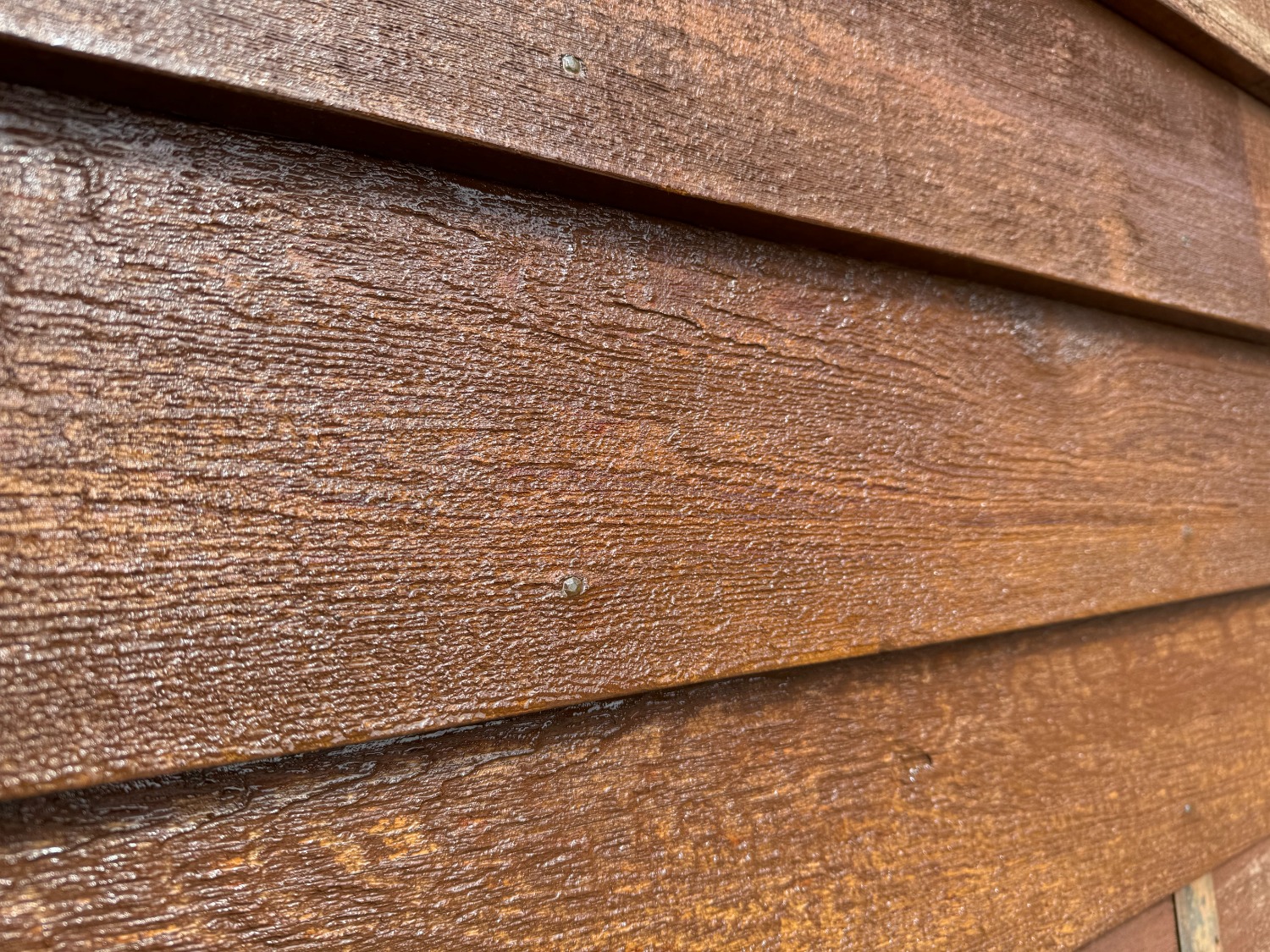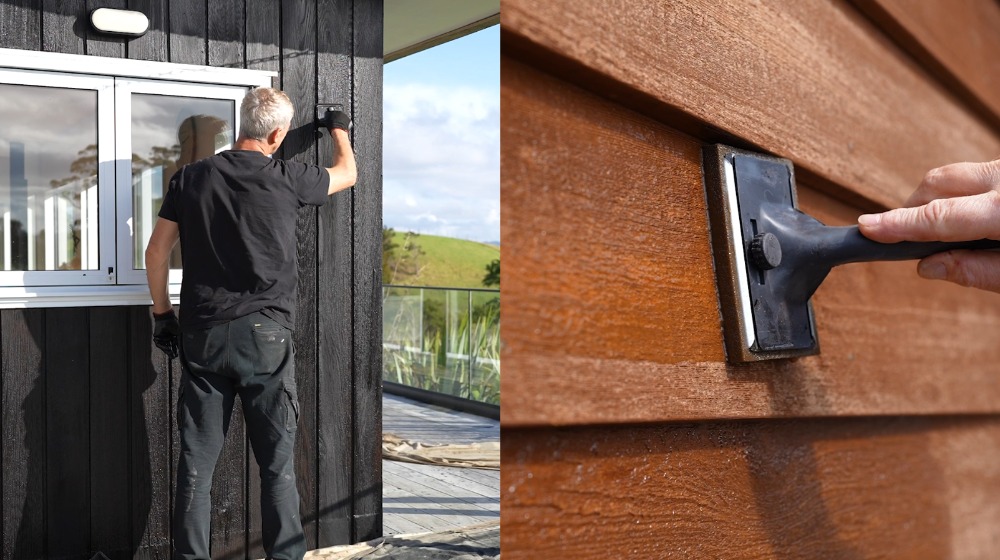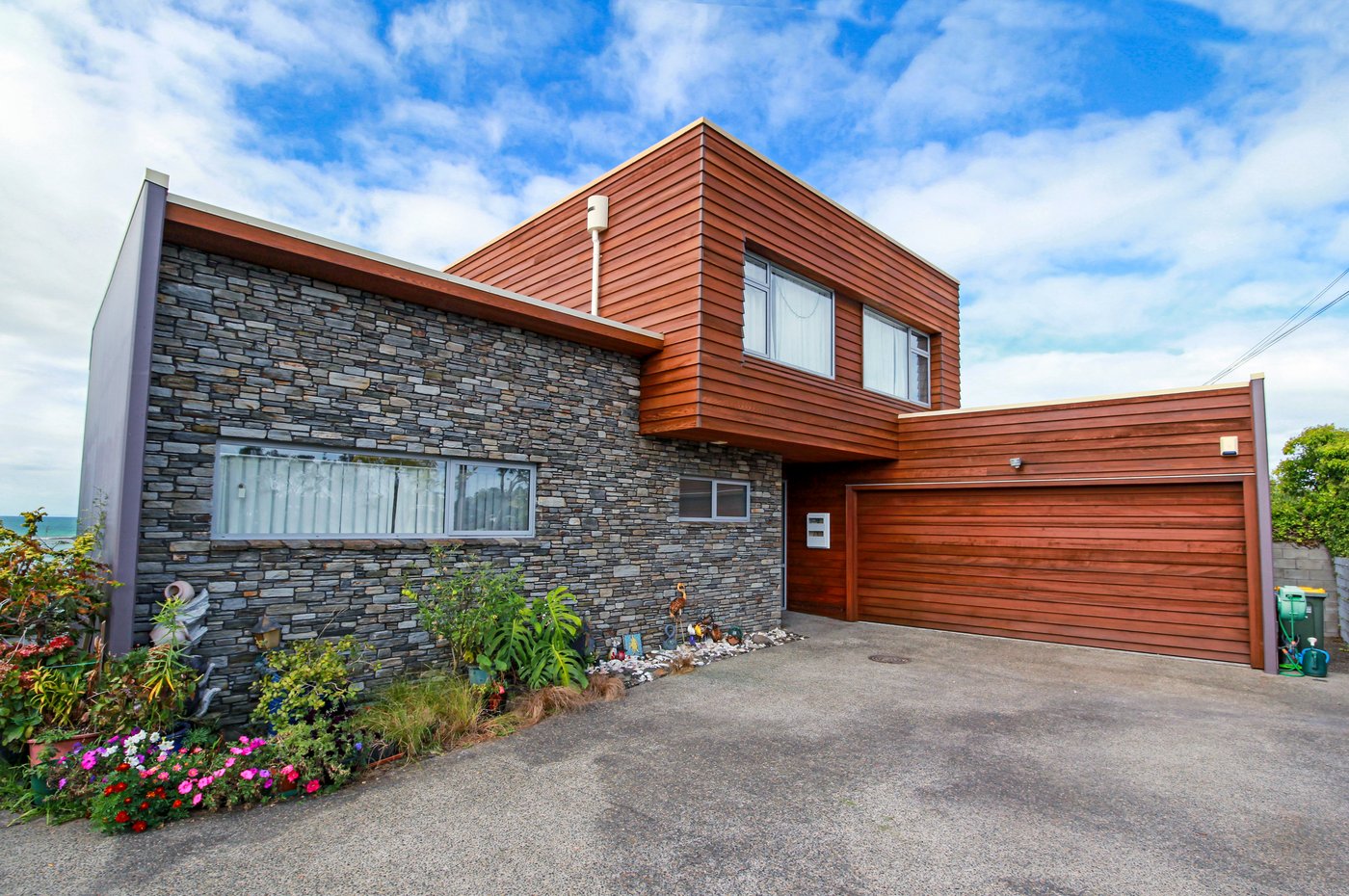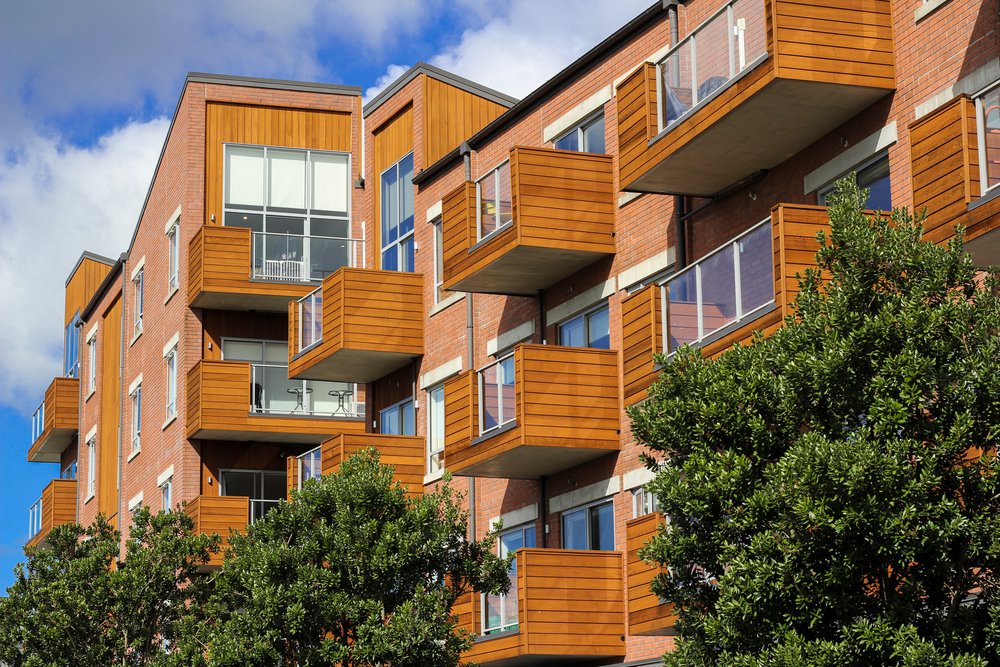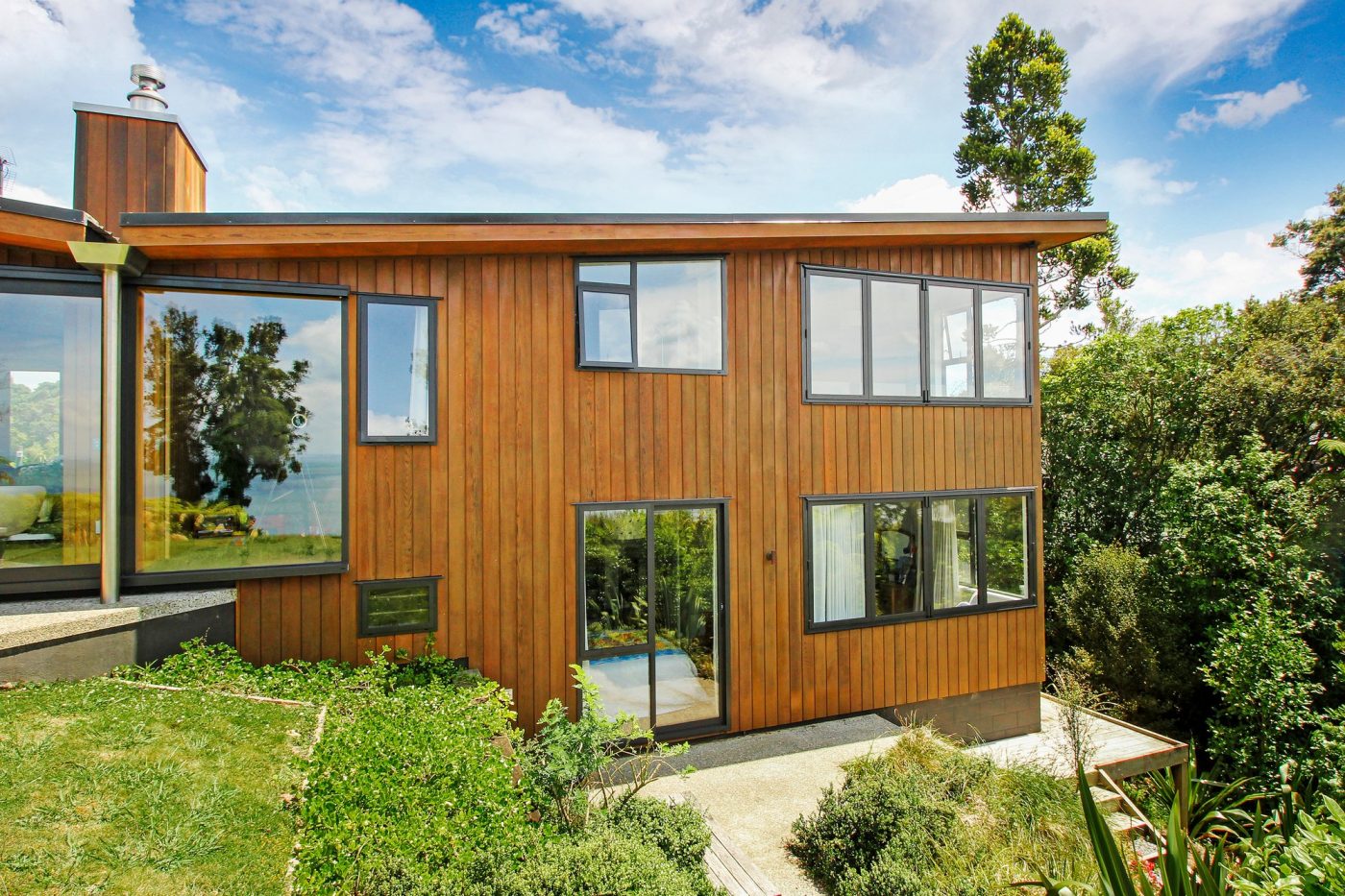
And no one knows how to care for Cedar like TimberTech.
And no one knows how to care for cedar like TimberTECH.
MAINTENANCE
The secret behind every great looking cedar home
If you’ve bought a tired cedar home, or your own home hasn’t been cared for in quite a while, restorative treatment may be needed. That may include replacing damaged timber and replacing loose or lost nails. With a TimberTech restoration, your home will look like new again!
But like all natural products, cedar responds best to regular care.
To protect your home and keep it looking beautiful year-round, exposed areas should be treated at least once every two years. If you leave it problems will compound: you may need to replace the cedar completely if it cracks or splits badly (a costly solution to an avoidable problem).
The good news is, regular maintenance may actually save you money.
And the benefit is huge. A premium quality home that will always turn heads – this year, and the next, and the one after.
Read more about our unique, customisable cedar maintenance programme here.
THE EXPERTS
Need an expert opinion?
Book a Cedar Assessment
Want a quick assessment of the condition of your cedar cladding? Let TimberTech help...
How does it work?
Just a few easy steps
We review supplied photos
Provide 2-3 photos of your home
We give you a treatment plan
We give you our professional opinion
in the know
Knowledge Hub
Recent Projects
13 Mar 2025
Time to answer the million-dollar question: how much does it cost to maintain or restore a Cedar home?
Thankfully, the answer is nowhere close to a million dollars! Looking after Cedar is often a lot more cost-effective than people assume, and that cost just goes down with regular maintenance.
Naturally, all homes are different, and no single price will fit the huge variety of Cedar homes across the country. The prices given here are a range, based on Mark’s experience looking after Cedar homes for 30+ years.
To cover the widest range of homes, we have categorised the pricing under 3 different eras, with some variables at the end.
Late 80s to late 90s
Cedar homes from this era are stained in a distinctive shade of reddish brown. There were only two types of stains available, and they were both brown.
To change the colour of the boards will be very costly, as you would need to strip off the stain before applying a new stain or oil. Most people go for a light rinse and a recoat using one of the new waterborne stains.
The boards themselves are often still in great condition. The Cedar from this era was milled from slow growing trees, making the boards denser and more stable.
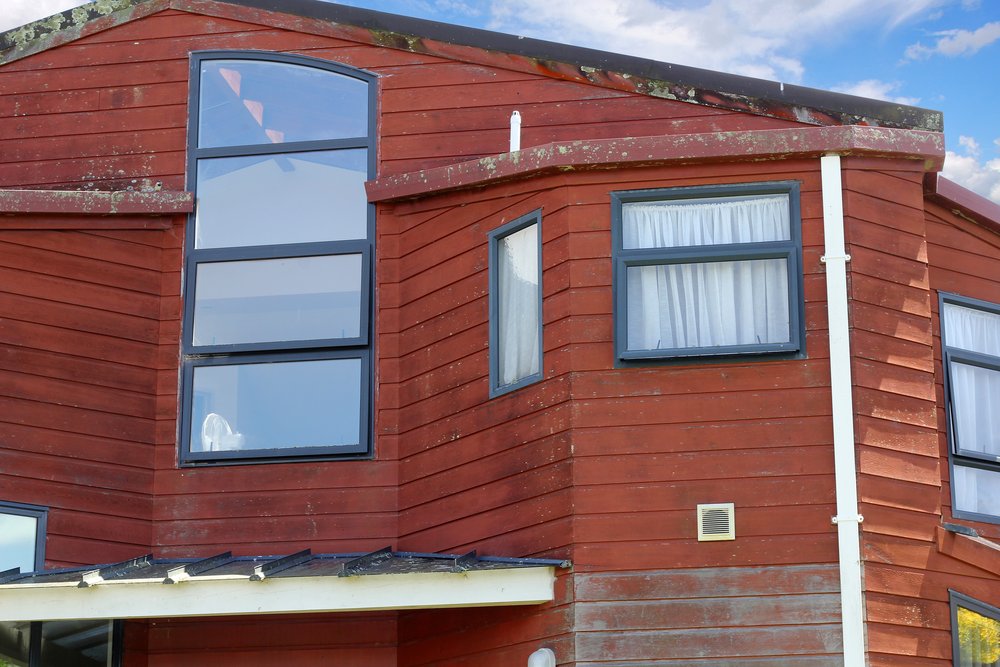
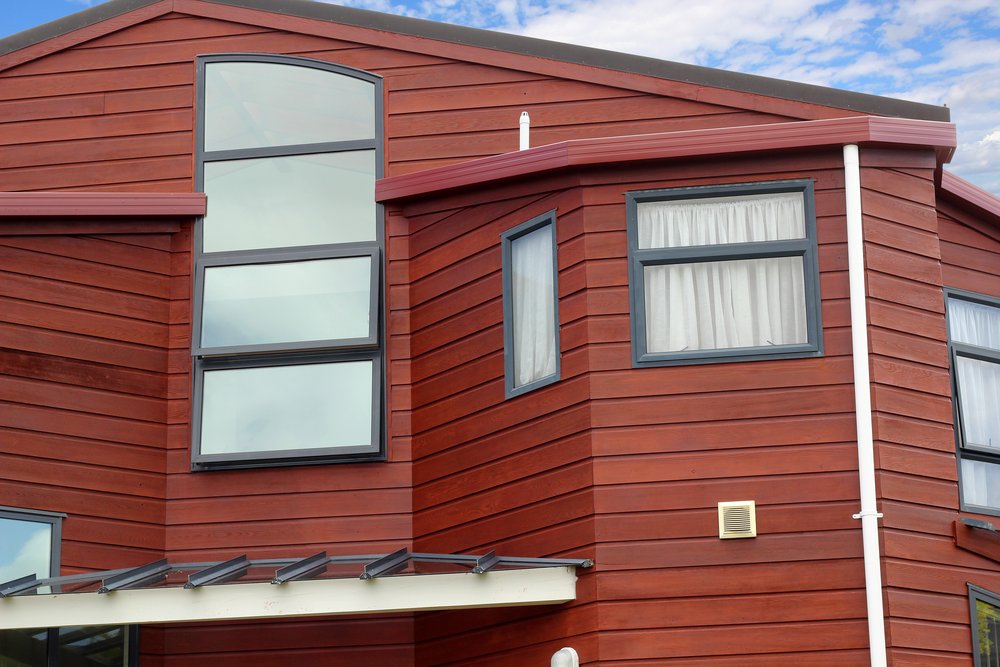
Cedar homeowners were also more likely to maintain the Cedar themselves, so the Cedar often has multiple coats of stain that further protect the boards from harmful UV rays.
Standard maintenance, or a combination of maintenance and restoration, will cost between $5.5k – $8.5k for a single-story home, and $8.5k – $10k for a double-story home.
Early 2000s to 2010
Cedar homes from the early 2000s often used Cedar as a feature, installed up high, to enhance the look of weatherboard and solid plaster houses. There are very few houses from this era that are clad entirely from Cedar.
20 years on, most of these houses have had nothing done to them. The culture of maintaining your own Cedar has diminished due to busier lifestyles and more focus on health and safety, resulting in Cedar on sun exposed faces looking shabby and tired.
This scenario usually requires restoration over maintenance. Restoration involves washing the house, removing any organic matter, stripping back any old stain, and then applying a new coat of oil.
The cost of restoration will depend on volume and aspect: how much Cedar was used as a feature and which direction it faces. If it’s northerly facing, you will need to do considerable restoration work. If you have a feature on the south face, it might still be in good condition and only require recoating every 10 years.
If the Cedar can be accessed by ladder or mobile scaffolding, the standard cost of a restoration is between $3.5 – $5.5k. Fixed scaffolding will add considerably more to the cost.
2010 – Present
Since 2010 onwards, Cedar has only grown in popularity. Homes are trending away from brick and tile, towards new townhouse developments, or architecturally designed properties.
Cedar is still a premium building material, but the price has come down in recent years due to faster growing methods and better exchange rates. As a result, we are back to building whole homes in Cedar.
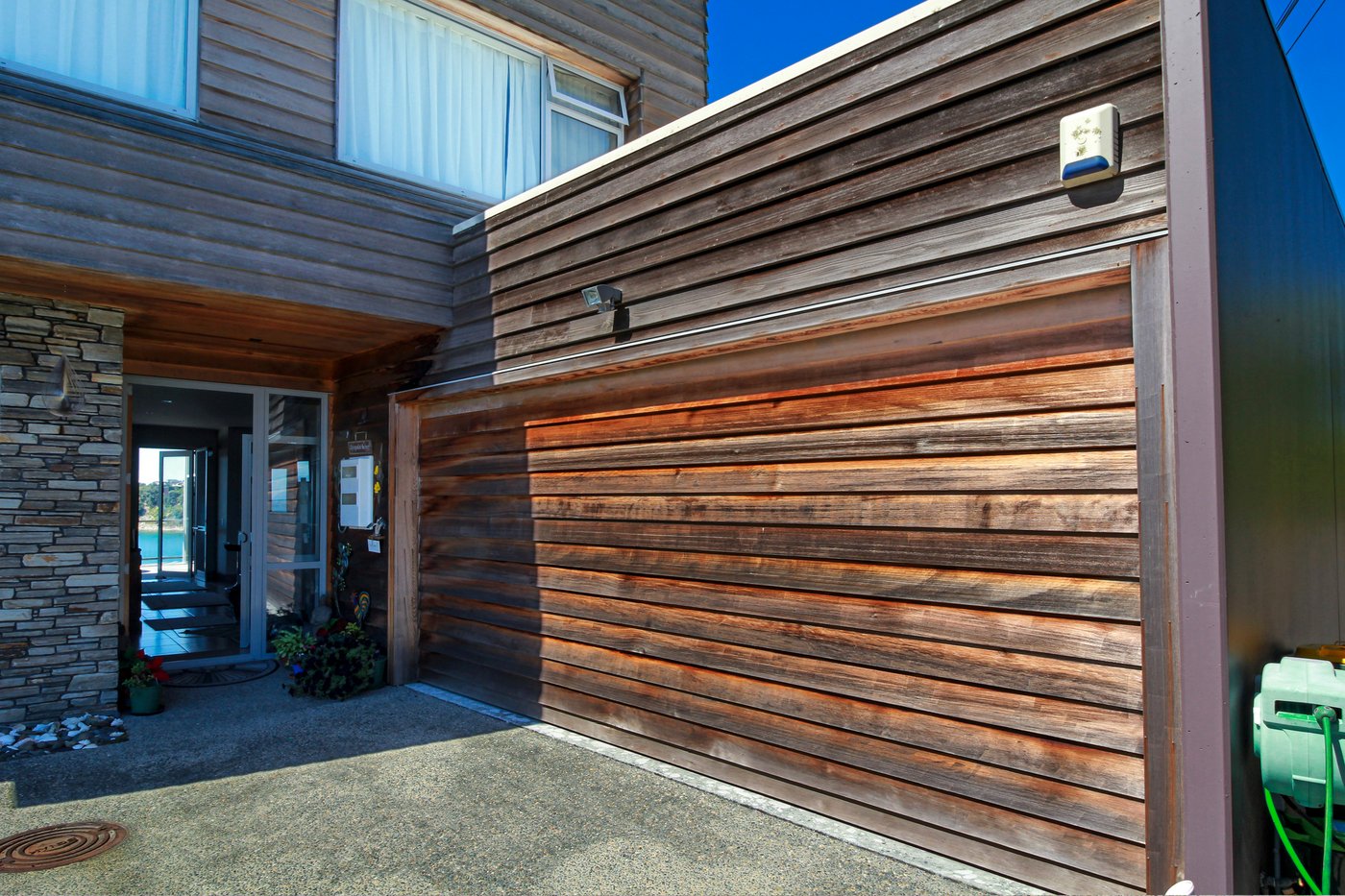
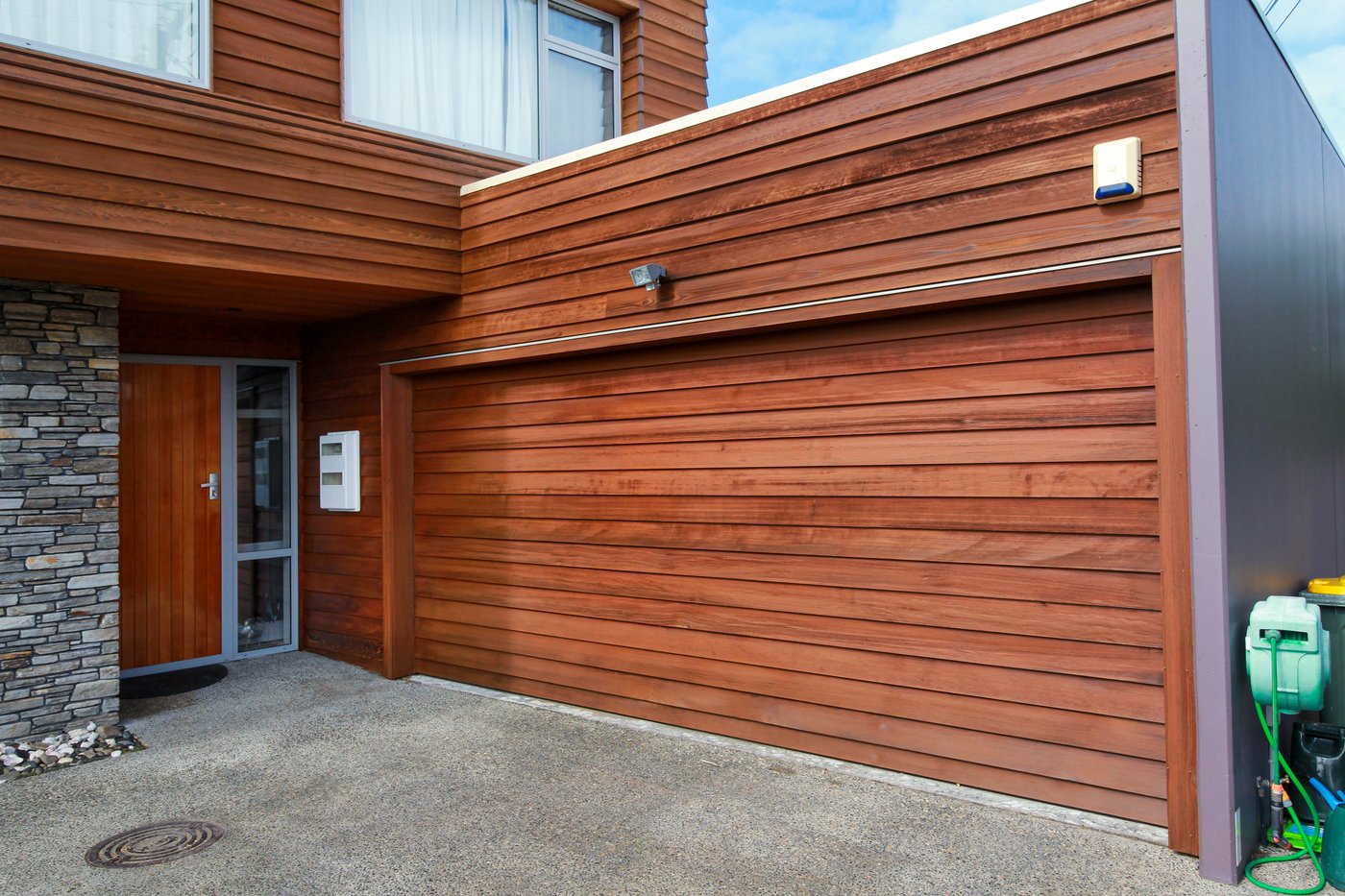
The downside is that the faster growing timber isn’t as dense as the old boards. It’s still an incredibly robust cladding but requires regular maintenance to keep stable. If neglected, the boards will start to cup, and at some point, begin to pull the fixings through the timber.
Single-story Cedar homes cost $6.5k on average for a wash and recoat. Double-story Cedar homes are upwards of $8k – $10k. Large architectural homes are $15k – $20k.
Pricing Variables
- Fixed scaffolding
Where possible we work from our own mobile scaffold towers and extension ladders, which are safe and fast, and keep costs down. Fixed scaffolding is often required when you go from 2 to 3 stories.
Scaffolding a large house will cost an additional $7.5 to $10k home. Scaffolding a smaller home, but still 2 story with high areas, will be $4k-$5k.
- Access issues
These are houses that are built on steep hillsides or have very high walls. There will always be additional costs when our team must access hard to reach areas, but it’s not often a huge expense. The areas that need rope and harness are usually limited, and it’s all part and parcel of what we do.
- Size of the house
The bigger the house, the more time, stain and oil it requires.
Additional stories on top of that will always be more expensive, and when you go from 2 to 3 stories scaffolding is required. If you have 2 stories, but there is very little up top, the extra cost will be minimal.
- Time passed
If you haven’t maintained your Cedar in the last 3-5 years, it’s going to be very dry and require a lot of product.
- Restoration vs Maintenance.
If the Cedar has never been touched, the boards will require a deep clean and oil. If they have stain, we need to strip back the broken-down stain. These are two very different treatments, with different costs associated.
Final Thoughts
No two houses are the same. There is a good reason why our team travel out to every house before we send a quote. There are a lot of variables in pricing a quote (and many of them can work in your favour!), so it’s always best to call our team for an onsite assessment.
We never push Cedar maintenance if it’s not needed and prefer to look after the best interests of our customers over the lifecycle of their homes.
15 Dec 2024
Applying the right amount of oil is essential in protecting your Cedar from the harsh New Zealand sun.
The purpose of applying oil is to seal the boards from moisture. And the only way you can seal the boards is to put enough oil into the deep pockets of the timber that the water will stop getting in.
If the pores of the timber are not filled with oil, they will accept whatever other liquid there is available, such as the rain or moisture in the air. This causes the boards to swell and contract, absorbing and releasing moisture.
The summer heat will then dry the surface of the timber and as the surface tension gets tighter, the boards will begin to cup.
Follow the Manufacturers Guidelines
For the purposes of this article, we will look at the manufacturer’s guidelines for Wood-X.
Coverage of Wood-X penetrating wood oils is dependent on surface condition, timber type, air temperature and other factors. The following is an approximate, typical guide.

The range of sq meters per litre (such as 9-14 sq meters for the first coat of dressed timber) is a guideline for different situations. There will be areas where the boards will allow you to put the maximum recommendations on, and areas where you will only get the minimum.
The end grain of the Cedar is nice and open and will suck up the oil, whereas the heart of the tree is a lot harder and does not absorb the oil as easily.
Other factors include the porosity of the board, how warm it is (in warm temperatures the boards will expand and oil will penetrate more easily), and the type of timber also makes a difference.
A dressed faced board has a smooth finish, like trying to get oil to penetrate glass, so it takes a long time for the oil to soak in. With a band sawn finish or weathered finish, the pores are open and will accept oil more readily and get deeper into the timber.
Is More Oil Always Better?
More is best. You can’t put too much Wood-X on. The intention is to saturate the surface and put as much oil into the timber as you can.
The timber will tell you when it’s full. It says that by perspiring. It leaves a shiny film on the surface and at that point, you know that no more oil is going in.
Sometimes people try and apply stains or oils sparingly and get them to look pretty with the first application. That’s not the design of a penetrating oil such as Wood-X. Wood-X needs to be applied so the boards get saturated and no longer absorb oil. At that point, you stop.
3-5 sq meters per litre is not a lot of timber to cover with quite a lot of oil, but that is what’s required if you want the boards to be protected.
Does Recoated Cedar Have Different Requirements?
No, the same principles apply. Saturate the surface and put as much oil into the timber as you can.
For new Cedar, the first recoat timing starts when the boards are installed and exposed to the air trafficking around the outside of the board. On a dressed face, the small pockets have already been filled with oil, so you are going to get 12-15 sq meters per litre.
That first coat can feel like it’s a waste of time. It’s not, it’s just very labour intensive for not a lot of gain, but it will set you up for the future of your timber.
Application Tips
- Be careful to protect the areas you don’t want oil on. It migrates very quickly and will get onto decking and painted weatherboards. Once soaked in, oil is difficult to get out.
- Using a spray gun is fast and effective, but we recommend using a brush or speed brush to take off any excess oil before it drips.
- Spend the time to get the colour right. Choose a colour you like and stay lighter, that way the 2nd coat can go darker. It’s hard to go the other way around.
- How long until the oil is dry to touch? If it’s a warm and windy day, around 48 hours after coating. With harder woods, or in cold conditions, you may need to extend that to 72 – 96 hours. As long as it takes to soak in.
- When you start to see the colour fade, that’s an indicator that your Cedar needs attention. Or when the rain comes and the boards go very dark because they have soaked up the water. Both are tell-tale signs that there is no oil in the pores of the timber.
Final Thoughts
Wood-X is tried and tested in New Zealand conditions. For stress free Cedar maintenance, simply follow the manufacturer’s guidelines and your boards will last forever (well, almost).
If you need further advice, do not hesitate to get in touch with our team. We are always happy to help!
15 Oct 2024
Tinted oils and stains are two very different products – each with unique compositions, application requirements, and long-term maintenance needs – but the names are often used interchangeably.
Even amongst building professionals, there is a lot of confusion around different Cedar treatments, and which is best for the long-term protection of Cedar in different situations.
In fairness, the difference is not always obvious, and much of the confusion comes from the terminology used by manufacturers in the past.
This article aims to set the record straight, and show why it’s beneficial – both for your Cedar and for your wallet – to know the difference between Cedar treatments.
Let’s start by defining what exactly is an oil and a stain.
What is a Penetrating Oil?
Penetrating oil is designed to migrate into the timber and waterproof it from the inside, protecting against movement from the wetting and drying process, but it offers no UV protection.
We do not recommend using clear oil on Cedar cladding as there is no UV protection.
When a tint is added to a clear oil base, it becomes a tinted oil.
The tinted oil has all the waterproofing benefits of clear oil, but the tint now protects the timber against UV, like a sunblock, and it can be applied with a range of different colours.
What is a Stain?
Traditional stains use a solvent to emulsify the oil and are typically a brown-red colour, prevalent on homes built before the 2000s.
Solvent based stains are still available, but they are being phased out in favour of water-borne stains, which are more environmentally friendly, and come in a range of colours.
Water-borne stains emulsify the oil in water. When applied to the surface, the water evaporates leaving behind the oil to migrate, to a degree, into the surface of the timber.
Stains do not penetrate deeply into the timber, unlike oil, and are designed to erode from the surface over time. Once the stain has been broken down by the UV, any remaining stain will need to be washed or sanded away before applying new stain.
Where Does the Confusion Lie?
Stains and tinted oils are the most common source of confusion when talking with Cedar homeowners.
People think of a stain as something they brush on and the stain then soaks into the timber. This is true, but a stain will only soak into the timber marginally compared to a penetrating oil.
If you pour tinted oil onto a white sheet, it’s going to change the colour of the sheet without changing the texture, essentially staining the fabric.
If you do the same with a traditional stain, which is actually like a very thin paint, it’s going to leave a coating on the sheet. It will change the colour, but only because there is a coating on the surface. It’s not actually staining the fabric.
By this rationale, a stain is not actually a stain, but it’s been called a stain for so many years that the name has stuck.
This may seem like splitting hairs, but knowing which product is right for your Cedar has a significant impact on how your Cedar needs to be maintained.
Why Does This Matter
If you know what treatment is on your Cedar, you can formulate the right maintenance strategy for your home – and potentially save yourself money, and heartache.
Here are a few practical examples:
- Existing Cedar Homes
If you already have a Cedar home, this means you can use the same treatment as before for the best colour matching and application; while avoiding generic products that do not perform as well, or incompatible treatments, such as applying a water-borne stain over an oil.
- New Cedar Homes
If you are building or buying a new Cedar home, a stain is often applied as it requires little upkeep for the first 5-10 years, but eventually the sun will dry out the timber and you might have to use a Cedar professional for maintenance or remedial work.
- Cost and Upkeep
Different treatments have different costs. Oil migrates deep into the timber, but doesn’t last on the surface as long as a stain and needs more regular upkeep. Stain lasts longer, but once it erodes, it needs to be removed evenly before recoating, or you end up with an uneven finish.
- Cedar Orientation
Areas in the shade require less maintenance than sun-exposed areas, making stain more suitable in some circumstances. And if you have an area of Cedar up high, the cost of scaffolding might be prohibitive for regular application of oil and a stain might make more sense.
All these potential complications can be eased by knowing what treatment has been used on your Cedar, and what treatment is best for different situations.
Final Thoughts
We are not saying that one product is better than the other, but by understanding what treatment is on your Cedar, you can make better decisions about how it needs to be protected.
If you are unsure, get in touch with our team and a Cedar expert will come out to your house to assess your cladding.
the facts
The amazing properties of Cedar

How may we help you?
We welcome enquiries from regions around New Zealand. If you require a quote, please include your phone number and address to help us deliver the quote as quickly as possible.
Services
Home Restoration
Bring damaged or fading cedar back to life!
Cedar Maintenance
Regular care to keep your home always looking great.
House Washing
We can restore and maintain any timber surface.
Commercial Buildings
Schools, offices, public buildings. Been there, done that.
Our Customer Reviews








